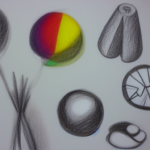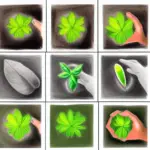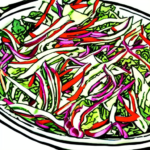Everybody loves fresh produce! From their sweet, crispy, or savory taste to their essential vitamins and minerals, there’s no doubt that fruits and vegetables are an integral (and nutritionist recommended) part of everyone’s diet. But how much do you know about your favorite edible flora? Do you know if artichokes are grown in your area, or the seasonal peak to buy zucchini at its freshest and most healthy, or how important it is to buy organic nectarines?
The purpose of this guide is to answer all of these questions and make you into a smarter and more conscientious produce shopper.
The Guide Explained
Fruit/Vegetable: The name of your favorite fruit or vegetable
Seasonality: The time of the year the produce grows naturally, or is “in season.” Eating seasonally guarantees your produce will be at its peak of freshness, with the highest amount of flavor and vitamins possible, so it’s always a good idea to buy seasonally whenever you can. Seasonality applies to areas in the northern hemisphere.
Areas Grown: The area or areas the fruit or vegetable is most commonly grown in. Like seasonally grown food, it’s always a good idea to buy produce as locally as possible to reduce “food miles” (the distance the produce has to travel to get to market, with a higher distance meaning more fossil-fuel pollution) and to support your local farming economy. Bear in mind that this guide just shows areas grown for the purpose of large farms and mass production—if you come across locally grown food at a farmer’s market, even if your area isn’t listed on the guide, it should definitely be purchased there.
Need to Buy Organic: While all fruits and vegetables should be bought organically if possible, certain fruits have a reputation for carrying more traces of pesticides than others and should definitely be bought organically to avoid the accidental consumption of dangerous chemicals. Information for this section is taken from the Environmental Working Group’s “Dirty Dozen” and “Clean Fifteen” lists, which give the types of produce that are most and least likely to contain traces of pesticides while being sold.
Health Benefits: Vitamins, minerals, and any other healthy reasons for you to eat this produce.
Some common vitamins found in fruits and vegetables:
- Vitamin A (carotene, retinol) – Stimulates the immune system; promotes bone growth, tooth growth, and cell reproduction ; maintains healthy hair, skin, and membranes; helps vision.
- Vitamin B1 (thiamine) – Stimulates the production of energy by helping cells in the body convert carbohydrates into energy .
- Vitamin B2 (riboflavin) – Like B2, helps with energy in the body by prompting the release of energy from carbohydrates. Also contributes to cell reproduction, red cell production, and body growth.
- Vitamin B3 (niacin)—Helps with cell functions in the skin, nerves and digestive system; plays a part in converting food to energy.
- Vitamin B5 (pantothenic acid) – Assists in the metabolism of food and the formation of hormones and good cholesterol.
- Vitamin B6 (pyridoxine) – Helps with creations of antibodies in the immune system in fighting off disease and foreign objects in the body; assists in maintaining nerve function and production of red blood cells, serves as a catalyst for chemical reactions in certain proteins.
- Vitamin B9 (folate/folic acid) – Assists in the production of red blood cells and nervous cells; helps with formation of DNA; is an integral part of spinal fluid; is critical for embryo growth and development and reduces risk of fetal neural tube defects , anencephaly, and spine difida, and is therefore highly recommended during pregnancy.
- Vitamin C – Serves as an antioxidant and protects cells and tissues from damaging oxidation; works as an antiviral agent; prevents cardiovascular disease and cancer.
- Vitamin E – Works as an antioxidant; plays a part in the formation of red blood cells and in the use of vitamin K; soothes and heals broken skin and tissue.
- Vitamin K – A fat soluble vitamin that helps with blood clotting; regulates blood calcium level; acts as a catalyst for multiple proteins involved in calcium absorption in bones.
Some common minerals found in fruits and vegetables:
- Calcium – Works with muscle contractions, blood flow and clotting, and the transport of nervous electrical signals; assists in passing nutrients through cell walls; eases insomnia; prevents osteoporosis.
- Copper – Promotes storage and absorption of iron; helps with creation of red blood cells; helps supply oxygen throughout the body.
- Iodine – Helps with maintenance of hair, skin, teeth, and nails; regulates body weight and energy production; promotes healthy and proper growth – present in all fruits and vegetables grown in iodine-rich soil.
- Iron – Assists in supplying oxygen to the body; promotes healthy immune system and prevents learning and behavioral problems.
- Magnesium – Involved in the making of bones, proteins, and cells; serves as a catalyst for activating B vitamins; relaxes muscles; promotes blood clotting and energy production; assists in absorption of calcium, vitamin C, and potassium; helps In the process of insulin secretion.
- Manganese – Serves as a catalyst in enzyme-protein reactions involving thyroid hormones, blood sugar, and metabolism.
- Phosphorous – Helps calcium in formation of teeth and bones and nerve cells.
- Potassium – Essential in keeping water balances between body fluids and cells, plays a part in the body’s general growth and maintenance; helps with proper heart function.
- Selenium – Involved in catalyzing enzymes for many necessary body functions; functions as an antioxidant that works with vitamin E.
- Sodium – Helps regulate blood pressure, blood volume, and fluid volume and balance in diffusion; promotes function of muscles and nerves. While too much sodium in a diet is frowned upon more than any other mineral, the sodium found in fruit is generally healthy and low in volume.
- Zinc – Important in general body growth; helps to maintain vision; works with protein and carbohydrate metabolism; assists in processes of the immune system; involved in wound healing.
Other common nutrients found in fruits:
- Carbohydrates – The main nutrient in fruit and many other foods (is a “simple carbohydrate” in fruits and is healthier than carbohydrates in processed foods); serves as main source of energy to the body.
- Fiber (dietary fiber) – Assists in improving digestive function and lowers levels of (bad) cholesterol, type 2 diabetes, and heart disease.
The Guide

Fruit/Vegetable: Apple
Seasonality: Late Summer through Autumn
Areas Grown: Largest world producer is China, grown all over the US but biggest producers are Washington state, New York, and Virginia.
Need to Buy Organic: Extreme. Top of the “Dirty Dozen” list with almost every sample showing great concentrations of multiple types of pesticide residue.
Health Benefits: Vitamin C, Potassium, Calcium, Phosphorous, Magnesium

Fruit/Vegetable: Apricot
Seasonality: Late Spring through early Summer
Areas Grown: Largest world producers are Turkey, Iran, and Uzbekistan, in US mainly grown in California and the Southwestern states.
Need to Buy Organic: If possible.
Health Benefits: Vitamin C, Vitamin A, Copper, Potassium

Fruit/Vegetable: Artichoke
Seasonality: Spring, stops during Summer and peaks again in early Autumn
Areas Grown: Largest world producers are Italy, Egypt, and Spain, in US mainly grown in California.
Need to Buy Organic: If possible.
Health Benefits: Vitamin B2, Vitamin B3, Vitamin B9, Vitamin K, Copper, Artichoke, Magnesium , Phosphorous, Sodium

Fruit/Vegetable: Asparagus
Seasonality: Spring
Areas Grown: Largest world producer is China, in US mainly grown in California and northeastern states.
Need to Buy Organic: If possible, but not necessary. Number 7 in the “Clean Fifteen” list.
Health Benefits: Vitamin B1, Vitamin B2, Vitamin B9, Vitamin K, Selenium, Zinc

Fruit/Vegetable: Avocado
Seasonality: While traditionally in season during the summer, they’re now harvested equally well year-round
Areas Grown: Largest world producer is Mexico, in US mainly grown in California and southwestern states.
Need to Buy Organic: Not necessary. Top of the “Clean Fifteen” list with less than one percent of samples testing positive for any type of pesticide residue.
Health Benefits: Potassium, Phosphorous, Magnesium, Calcium, Sodium, Iron, Zinc, Vitamin C, Vitamin E, Vitamin B3, Vitamin B5

Fruit/Vegetable: Beets
Seasonality: Year-round
Areas Grown: Largest world producers are Russia and France, in US beets are grown all over the Eastern states.
Need to Buy Organic: If possible.
Health Benefits: Vitamin B6, Vitamin B9, Vitamin C, Sodium, Magnesium, Phosphorous

Fruit/Vegetable: Banana
Seasonality: Year-round
Areas Grown: Honduras and other Central and South American countries, parts of Africa and Southeast Asia with warm, humid climates.
Need to Buy Organic: If possible— between the “Dirty Dozen” and “Clean Fifteen” lists.
Health Benefits: Vitamin B3, Vitamin C, Potassium, Phosphorous, Magnesium, Calcium

Fruit/Vegetable: Blackberry
Seasonality: Late Spring and Summer
Areas Grown: Largest world producer is Mexico, in US mainly grown in Oregon, can be found growing wild in areas all over the United States.
Need to Buy Organic: If possible.
Health Benefits: Vitamin B3, Vitamin C, Vitamin E, Potassium, Phosphorous, Magnesium, Calcium, Iron, Zinc, Manganese

Fruit/Vegetable: Blackcurrant
Seasonality: Summer
Areas Grown: Largest world producers are Russia and all over Europe. Grows in the US but isn’t mass produced on a notable scale due to nationwide growing bans in the 1960s that have only been partially overturned.
Need to Buy Organic: If possible.
Health Benefits: Vitamin C, Vitamin E, Potassium, Phosphorus, Magnesium, Calcium, Sodium, Iron

Fruit/Vegetable: Blueberry
Seasonality: Summer
Areas Grown: Internationally grown and harvested in northwestern Europe and Japan, largest world producer is United States with blueberry growth all over the country but centered in the East and Midwest.
Need to Buy Organic: It depends—domestic blueberries showed a significantly higher amount of pesticide residue as compared to imported international blueberries, though neither made it onto the “Dirty Dozen” or “Clean Fifteen list.
Health Benefits: Vitamin C, Vitamin E, Potassium, Phosphorous, Magnesium, Calcium

Fruit/Vegetable: Broccoli
Seasonality: Year-round, but best in Autumn and Winter
Areas Grown: Largest world producers are China, India, and Spain, in US mainly in the Northeastern states.
Need to Buy Organic: If possible— between the “Dirty Dozen” and “Clean Fifteen” lists.
Health Benefits: Vitamin A , Vitamin B5, Vitamin B6, Vitamin B9, Vitamin C, Vitamin K, Sodium

Fruit/Vegetable: Brussels Sprout
Seasonality: Late Autumn and Winter
Areas Grown: Largest world producers are the Netherlands and Germany, in US mainly grown in California.
Need to Buy Organic: If possible.
Health Benefits: Vitamin A, Vitamin B1, Vitamin B2, Vitamin B5, Vitamin B6, Vitamin B9, Vitamin C, Vitamin K, Calcium, Iron, Manganese, Phosphorous, Selenium, Sodium, Zinc

Fruit/Vegetable: Cabbage
Seasonality: Year-round, but best in late Autumn and Winter
Areas Grown: Largest world producers are China, India, and Russia, in US mainly grown in eastern states.
Need to Buy Organic: If possible, but not necessary—number four on the “Clean Fifteen” list.
Health Benefits: Vitamin A, Vitamin B9, Vitamin K, Potassium, Phosphorus, Magnesium, Calcium, Sodium

Fruit/Vegetable: Cantaloupe
Seasonality: Late Summer
Areas Grown: Can grow in any warm, temperate climate, in US mainly grown in California.
Need to Buy Organic: If possible, but not urgent—number fourteen on the “Clean Fifteen” list.
Health Benefits: Vitamin A, Vitamin C, Vitamin K, Potassium, Phosphorus, Magnesium, Calcium, Sodium

Fruit/Vegetable: Carrots
Seasonality: Year-round
Areas Grown: Largest world producers are China, Japan, and many northwestern European countries, in the United States mainly grown in the Northeast.
Need to Buy Organic: If possible— between the “Dirty Dozen” and “Clean Fifteen” lists.
Health Benefits: Vitamin A (major source), Vitamin C, Vitamin K, Potassium, Phosphorus, Calcium, Magnesium, Sodium

Fruit/Vegetable: Celeriac
Seasonality: Autumn and Winter
Areas Grown: Largest world producers are around the Mediterranean basin and in Northern Europe, uncommon but available in many parts of the US.
Need to Buy Organic: If possible.
Health Benefits: Vitamin C, Vitamin B3, Potassium, Phosphorus, Magnesium, Calcium, Sodium

Fruit/Vegetable: Celery
Seasonality: Year-round, but best in Autumn and Winter
Areas Grown: Available all over Europe and the United States.
Need to Buy Organic: If possible— between the “Dirty Dozen” and “Clean Fifteen” lists.
Health Benefits: Vitamin C, Potassium, Phosphorus, Magnesium, Calcium, Sodium

Fruit/Vegetable: Cherry
Seasonality: Late Spring and Summer
Areas Grown: Largest world producers are Turkey, United States, and Iran, in US mainly grown in pockets of the Southwest, Northwest, and Northeast.
Need to Buy Organic: If possible—between the “Dirty Dozen” and “Clean Fifteen” lists.
Health Benefits: Vitamin C, Vitamin K, Potassium, Phosphorus, Magnesium, Calcium, Sodium

Fruit/Vegetable: Clementine
Seasonality: Winter
Areas Grown: Largest world producers are Algeria, Tunisia, Spain, and Turkey, in the US mainly grown in Florida and California.
Need to Buy Organic: If possible—between the “Dirty Dozen” and “Clean Fifteen” lists.
Health Benefits: Vitamin C, Potassium, Calcium, Copper, Manganese

Fruit/Vegetable: Corn/Maize
Seasonality: Summer
Areas Grown: Largest world producers are the United States, China, and Brazil, with the overwhelming majority of corn in the US being grown in the Midwest.
Need to Buy Organic: Not necessary—number two on the “Clean Fifteen” list.
Health Benefits: Vitamin C, Vitamin B3, Folate, Potassium, Phosphorus, Magnesium, Calcium

Fruit/Vegetable: Cranberry
Seasonality: Autumn
Areas Grown: Largest world producers at the US and Canada, with most commercial cranberry crops being grown and harvested being grown in the northern states.
Need to Buy Organic: If possible.
Health Benefits: Vitamin C, Vitamin E, Potassium, Phosphorus, Magnesium, Calcium, Sodium

Fruit/Vegetable: Cucumber
Seasonality: Summer
Areas Grown: Largest world producers are China, Iran, and Turkey, with cultivation throughout the US and the rest of the world being very widespread.
Need to Buy Organic: Yes—number nine on the “Dirty Dozen” list.
Health Benefits: Vitamin C, Vitamin K, Potassium, Phosphorus, Magnesium, Sodium, Calcium

Fruit/Vegetable: Date
Seasonality: Late Winter and Spring
Areas Grown: Largest world producers are Egypt, Saudi Arabia, and other countries in the Middle East and northern Africa, a relatively small market exists in the Southwestern and Northeastern US.
Need to Buy Organic: If possible.
Health Benefits: Vitamin B3, Folate, Potassium, Phosphorus, Magnesium, Calcium, Sodium, Iron

Fruit/Vegetable: Eggplant/Aubergine
Seasonality: Summer and Early Fall
Areas Grown: Largest world producers are China, India, and Iran, in the US there is limited growth in the southwest and southeast states.
Need to Buy Organic: If possible, but not urgent—number 9 on the “Clean Fifteen” list.
Health Benefits: Vitamin C, Potassium, Phosphorus, Magnesium, Calcium, Sodium

Fruit/Vegetable: Fig
Seasonality: Summer and Fall
Areas Grown: Largest world producers are Turkey, Egypt, and Algeria, with growth and cultivation in the US done mainly in the Southern states with mild winters.
Need to Buy Organic: If possible.
Health Benefits: Vitamin C, Potassium, Phosphorus, Magnesium, Calcium, Sodium

Fruit/Vegetable: Gooseberry
Seasonality: Summer and Autumn
Areas Grown: Gooseberries are almost exclusively cultivated on a large scale in Europe, with the largest world producers being Russia and Norway.
Need to Buy Organic: If possible.
Health Benefits: Vitamin A, Folate, Vitamin C, Potassium, Phosphorus, Magnesium, Calcium, Sodium

Fruit/Vegetable: Grape
Seasonality: Late Summer through Early Autumn
Areas Grown: Largest world producers are China and the United States (though Spain, France, and Italy allocate the most space per country for wine-making grapes), with most grapes in the US grown on the east and west coasts, especially in California.
Need to Buy Organic: Very High— number three on the “Dirty Dozen” list.
Health Benefits: Vitamin C, Folate, Potassium, Phosphorus, Magnesium, Calcium

Fruit/Vegetable: Grapefruit
Seasonality: Winter and Spring
Areas Grown: The United States is the world’s largest producer of grapefruits, with cultivation mainly in Florida, and some in Texas, California, and Arizona.
Need to Buy Organic: If possible, but not necessary—number ten on the “Clean Fifteen” list.
Health Benefits: Vitamin A, Folate, Vitamin C, Potassium, Phosphorus, Magnesium, Calcium

Fruit/Vegetable: Green beans/string beans
Seasonality: Spring through Fall
Areas Grown: Top world producers are China, Indonesia, and India, with green beans in the US minly grown in Wisconsin, Oregon, and New York.
Need to Buy Organic: If possible— between the “Dirty Dozen” and “Clean Fifteen” lists.
Health Benefits: Vitamin C, Folate, Potassium, Phosphorus, Magnesium, Calcium, Iron, Sodium

Fruit/Vegetable: Kale/Collard Greens
Seasonality: Fall and Winter
Areas Grown: The largest kale producers are in northern Europe, with Kale in the US mainly grown in the Southern states.
Need to Buy Organic: If possible— between the “Dirty Dozen” and “Clean Fifteen” lists.
Health Benefits: Vitamin A, Vitamin C, Potassium, Phosphorus, Magnesium, Calcium, Iron, Sodium

Fruit/Vegetable: Kiwi/Kiwifruit
Seasonality: Winter through early Spring
Areas Grown: Largest world producers are Italy, New Zealand, and Chile, with cultivation in the US mainly in the Northeast.
Need to Buy Organic: If possible, but not urgent— number nine on the “Clean Fifteen” list
Health Benefits: Vitamin C, Potassium, Phosphorus, Magnesium, Calcium

Fruit/Vegetable: Leek
Seasonality: Fall through Spring
Areas Grown: Largest world producers are Mediterranean countries and Western Asia, and while not widely cultivated in the United States grow in many different places.
Need to Buy Organic:. If possible.
Health Benefits: Vitamin A, Folate, Potassium, Phosphorus, Magnesium, Calcium, Iron, Sodium

Fruit/Vegetable: Lemon
Seasonality: Winter and Spring
Areas Grown: Largest world producers are Mexico, China, and India, with growth in the United States mainly in the Northeast and central East states.
Need to Buy Organic: If possible.
Health Benefits: Vitamin C, Folate Potassium, Phosphorus, Magnesium, Calcium, Sodium

Fruit/Vegetable: Lettuce (Romaine)
Seasonality: Year-round, but best in the Spring
Areas Grown: Largest world producers are China, the United States, and India, with most lettuce in the US being grown in Arizona and California.
Need to Buy Organic: If possible—between the “Dirty Dozen” and “Clean Fifteen” lists.
Health Benefits: Vitamin B1, Vitamin C, Manganese, Potassium, Copper, Iron

Fruit/Vegetable: Lime
Seasonality: Late Summer and Autumn
Areas Grown: Largest world producers are Mexico, Argentina, and India, with with growth in the United States mainly in the Northeast and central East states.
Need to Buy Organic: If possible.
Health Benefits: Vitamin C, Potassium, Phosphorous, Calcium

Fruit/Vegetable: Mango
Seasonality: Summer
Areas Grown: Top world producers are India, China, and Thailand, with small amounts of cultivation in the United States in Hawaii, Southwest California, and Southern Florida.
Need to Buy Organic: If possible, but not entirely necessary—number eight on the “Clean Fifteen” list.
Health Benefits: Vitamin A, Vitamin B3, Vitamin C, Vitamin E, Folate, Potassium, Phosphorus, Magnesium, Calcium

Fruit/Vegetable: Melon (Honeydew)
Seasonality: Summer through early Autumn
Areas Grown: Largest world producers are China, Turkey, and the United States, with melon in the US mainly growing in California and Arizona.
Need to Buy Organic: If possible—between the “Dirty Dozen” and “Clean Fifteen” lists.
Health Benefits: Vitamin A, Vitamin C, Vitamin K, Potassium, Phosphorus, Magnesium, Calcium, Sodium

Fruit/Vegetable: Mushroom
Seasonality: Year-round, but best Spring through Autumn
Areas Grown: Largest producers are China, France, and the United States, with mushrooms grown all over the continental US.
Need to Buy Organic: If possible, but not entirely necessary—number fifteen on the “Clean Fifteen” list.
Health Benefits: Vitamin B3, Vitamin D, Folate, Potassium, Phosphorous, magnesium, Calcium

Fruit/Vegetable: Nectarine
Seasonality: Summer
Areas Grown: Largest world producers are China, Italy, and Spain, with the main nectarine-producing states in the US being Georgia, California, and South Carolina.
Need to Buy Organic: Yes, but it depends—domestic nectarines showed a significantly lower amount of pesticide residue as compared to imported international nectarines, which were placed number eight on the “Dirty Dozen” list.
Health Benefits: Vitamin A, Vitamin B3, Vitamin C, Vitamin E, Potassium, Phosphorus, Magnesium, Calcium

Fruit/Vegetable: Okra
Seasonality: Late Summer through early Autumn
Areas Grown: Largest world producers are India and Pakistan, in the United States common growing areas are in the south, especially along the Gulf Coast.
Need to Buy Organic: If possible.
Health Benefits: Vitamin C, Vitamin B3, Folate, Potassium, Phosphorus, Magnesium, Calcium, Sodium

Fruit/Vegetable: Onion
Seasonality: Spring through Autumn
Areas Grown: Largest world producers are China, India, and the United States, with Washington state, Idaho, Oregon, and California being the top US producers.
Need to Buy Organic: If possible—between the “Dirty Dozen” and “Clean Fifteen” lists.
Health Benefits: Vitamin C, Potassium, Phosphorus, Calcium, Iron, Magnesium, Sodium

Fruit/Vegetable: Orange
Seasonality: Winter through Spring (Navel), Spring through Summer (Valencia)
Areas Grown: Largest world producers are Brazil, the United States, and China, with Florida and California growing the majority of the US’s oranges.
Need to Buy Organic: If possible—between the “Dirty Dozen” and “Clean Fifteen” Lists.
Health Benefits: Vitamin A, Vitamin C, Folate, Potassium, Phosphorus, Magnesium, Calcium

Fruit/Vegetable: Parsnip
Seasonality: Autumn through Spring
Areas Grown: Largest world producers are the United Kingdom and the United States, with parsnips being grown in mainly northern states.
Need to Buy Organic: If possible.
Health Benefits: Vitamin C, Vitamin B3, Folate, Vitamin E, Potassium, Phosphorus, Magnesium, Calcium, Iron, Sodium

Fruit/Vegetable: Pea
Seasonality: Spring through early Summer
Areas Grown: Largest world producers are Canada, France, and India, with
Need to Buy Organic: Varies. Imported snap peas hold enough pesticide residue to be placed as number fifteen on the “Dirty Dozen” list, domestic snap peas are between the “Dirty Dozen” and “Clean Fifteen” lists, and sweet peas, both domestic and imported, are number five on the “Clean Fifteen” list.
Health Benefits: Vitamin A, Vitamin C, Vitamin B3, Folate, Potassium, Phosphorus, Magnesium, Calcium, Sodium, Selenium, Iron, Zinc

Fruit/Vegetable: Peach
Seasonality: Summer
Areas Grown: Largest world producers are China, Spain, and Italy, with the main nectarine-producing states in the US being Georgia, South Carolina, and California.
Need to Buy Organic: Yes—number five on the “Dirty Dozen” list.
Health Benefits: Vitamin A, Vitamin B3, Vitamin C, Vitamin E, Potassium, Phosphorus, Magnesium, Calcium

Fruit/Vegetable: Pear
Seasonality: Autumn
Areas Grown: Largest world producers are China, Italy, and the United States, with US pear production centered in the Northwest.
Need to Buy Organic: If possible—between the “Dirty Dozen” and “Clean Fifteen” lists.
Health Benefits: Vitamin C, Folate, Potassium, Phosphorus, Magnesium, Calcium

Fruit/Vegetable: Pepper
Seasonality: Summer and early Autumn
Areas Grown: Largest world producers are China, Mexico, and China,
Need to Buy Organic: Depends—sweet bell peppers place seven on the “Dirty Dozen” list while hot peppers are between the “Dirty Dozen” and “Clean Fifteen” lists.
Health Benefits: Vitamin C, Folate, Potassium, Phosphorus, Calcium

Fruit/Vegetable: Plum
Seasonality: Summer
Areas Grown: Largest world producers are China, Serbia, and Romania, with the main areas of cultivation in the US being California, Oregon, Idaho, Michigan, and Washington state.
Need to Buy Organic: If possible—between the “Dirty Dozen” and “Clean Fifteen” lists.
Health Benefits: Vitamin A, Folate, Vitamin C, Potassium, Phosphorus, Magnesium, Calcium

Fruit/Vegetable: Pomegranate
Seasonality: Autumn
Areas Grown: Largest world producers are in the Middle East, Southern Asia, and on the Mediterranean Basin, with California and Arizona being the main US producers.
Need to Buy Organic: If possible.
Health Benefits: Vitamin C, Vitamin E, Vitamin K, Folate, Potassium, Phosphorus, Magnesium, Calcium

Fruit/Vegetable: Potato
Seasonality: Year-round, but best from late Summer through Autumn
Areas Grown: Largest world producers are China, India, Russia, and Ukraine, with Idaho (famously) responsible for the highest potato cultivation in the United States followed by Washington state.
Need to Buy Organic:Yes—number twelve on the “Dirty Dozen” list.
Health Benefits: Vitamin C, Vitamin B3, Potassium, Phosphorus, Magnesium, Calcium, Iron, Sodium

Fruit/Vegetable: Pumpkin
Seasonality: Autumn
Areas Grown: Largest world producers are China, India, Russia, and the United States, with the largest number of pumpkins grown in Illinois.
Need to Buy Organic: If possible.
Health Benefits: Vitamin C, Vitamin B3, Vitamin A, Vitamin A, Potassium, Phosphorus, Magnesium, Calcium, Iron, Sodium

Fruit/Vegetable: Radish
Seasonality: Spring through Autumn
Areas Grown: Largest world producers are China, Japan, and Austria, with most US radishes grown in he northwestern portion of the United States.
Need to Buy Organic: If possible.
Health Benefits: Vitamin C, Folate, Potassium, Phosphorus, Magnesium, Calcium

Fruit/Vegetable: Raspberry
Seasonality: Summer
Areas Grown: Largest world producers are Russia, Poland, and Serbia, with raspberries growing well all over the eastern and Midwestern United States.
Need to Buy Organic: If possible—between the “Dirty Dozen” and “Clean Fifteen” lists.
Health Benefits: Folate, Vitamin C, Vitamin E, Potassium, Phosphorus, Magnesium, Calcium

Fruit/Vegetable: Spinach
Seasonality: Year-round
Areas Grown: Largest world producers are China, the United States, and Japan, with farms in California, Arizona, and New Jersey accounting for almost all of the spinach commercially grown.
Need to Buy Organic: High—placed number six on the “Dirty Dozen” list.
Health Benefits: Vitamin C, Folate, Vitamin A, Vitamin K, Potassium, Phosphorus, Magnesium, Calcium, Sodium

Fruit/Vegetable: Squash (Summer)/Zucchini
Seasonality: Summer
Areas Grown: Largest world producers are China, India, and Russia, with squash in the US growing all over the country.
Need to Buy Organic: If possible—between the “Dirty Dozen” and “Clean Fifteen” lists. Slightly lower in pesticide residue than winter squash.
Health Benefits: Vitamin C, Vitamin B3, Vitamin A, Folate, Potassium, Phosphorus, Magnesium, Calcium

Fruit/Vegetable: Squash (Winter)
Seasonality: Fall through Winter
Areas Grown: Largest world producers are China, India, and Russia, with squash in the US growing all over the country.
Need to Buy Organic: If possible—between the “Dirty Dozen” and “Clean Fifteen” lists. Slightly higher in pesticide residue than summer squash.
Health Benefits: Vitamin C, Vitamin B3, Vitamin A, Potassium, Phosphorus, Magnesium, Calcium

Fruit/Vegetable: Strawberry
Seasonality: Spring through Summer
Areas Grown: Largest world producers are the United States, Turkey, and Spain, with the largest strawberry cultivating states being California, Florida, and Oregon.
Need to Buy Organic: If possible.
Health Benefits: Vitamin C, Vitamin E, Folate, Potassium, Phosphorus, Magnesium, Calcium

Fruit/Vegetable: Tomato
Seasonality: Summer
Areas Grown: Largest world producers are China, India, and the United States, with California, Virginia, Florida, and Georgia producing the most tomatoes in the US.
Need to Buy Organic: Depends. Cherry tomatoes placed ten on the “Dirty Dozen” list while standard tomatoes were between the two lists.
Health Benefits: Vitamin A, Vitamin B3, Vitamin C, Folate, Potassium, Phosphorus, Magnesium Calcium

Fruit/Vegetable: Watermelon
Seasonality: Summer
Areas Grown: Largest world producers are China, Turkey, and Iran, with Georgia, Florida, and Texas as the largest state watermelon cultivators.
Need to Buy Organic: If possible—between the “Dirty Dozen” and “Clean Fifteen” lists.
Health Benefits: Vitamin A, Vitamin C, Folate, Potassium, Phosphorus, Magnesium, Calcium, Sodium











